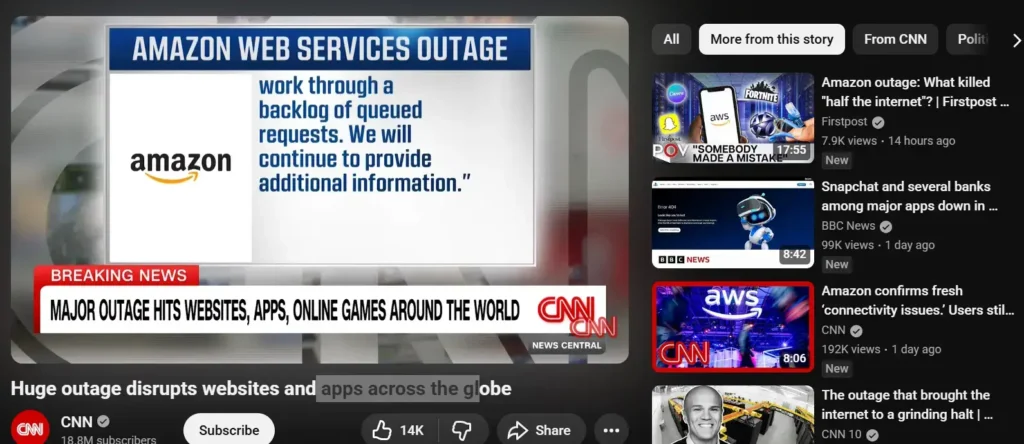
Quick Facts
- Amazon Web Services suffered a major outage on October 20, 2025, starting at 3 a.m. ET and disrupting services for over 1,000 businesses including Snapchat, Fortnite, Coinbase, and Robinhood
- The incident originated from DNS resolution problems within AWS’s US-EAST-1 region in Northern Virginia, traced to internal subsystem monitoring on network load balancers
- Downdetector recorded over 50,000 outage reports at peak, with services restored by 1 p.m. ET after engineers deployed manual interventions to bypass faulty network nodes
- Bob Wambach, VP of Product Portfolio at Dynatrace, warns traditional monitoring tools cannot keep pace with modern IT complexity spanning hybrid clouds, APIs, and AI workloads
- Financial impact potentially reaches hundreds of billions in lost transactions, with crypto platforms and gaming services experiencing extended downtime during peak trading hours
- Expert analysis suggests worst-case scenarios could involve systemic outages lasting days when critical infrastructure like payments, logistics, or healthcare systems fail simultaneously
Inside the Move
The outage exposes fundamental vulnerabilities in centralized cloud architecture, where even AWS’s robust redundancy systems failed to prevent cascading failures across interconnected services.
Wambach emphasizes the industry must shift from reactive firefighting in manual war rooms to proactive prevention using AI-driven observability platforms that map digital ecosystems causally.
Modern dependencies create scenarios where small DNS errors trigger massive disruptions because IT teams manage millions of interdependent API calls and microservices without clear visibility into downstream impacts.
The incident mirrors 2021’s automated scaling failures and the 2024 CrowdStrike outage, revealing persistent challenges in maintaining true redundancy at hyperscale despite AWS controlling 30 percent of global cloud infrastructure.
Recovery required hours of manual node bypassing rather than instant automated failover, highlighting gaps between theoretical disaster recovery capabilities and real-world execution under pressure.
Momentum Tracker
🔺 AI-driven observability platforms gain validation as enterprises recognize traditional monitoring cannot prevent cascading failures in hybrid cloud environments with millions of interdependent services
🔻 Centralized cloud providers face mounting pressure to redesign redundancy architectures after repeated high-profile outages expose vulnerabilities despite dominating 30 percent market share
